A Potter's Tale
Everybody has a story to tell and potters are no exception. Before the days of tweets and blogs, telling that story to a wider audience meant going into print. In most cases this meant writing an article for a ceramics magazine, but some potters managed to go one better than this and have a book published. These books mostly concentrated on aspects of materials or technique, but occasionally a potter would write about ceramics in a wider context and in the process they would tell a story.
This essay is about a few of these books. Most of them are relatively unknown, little gems in what must be considered one of the more obscure branches of publishing. I haven’t chosen them for their inherent literary merit or even for the wealth of information they convey. More than anything else I like the sense of honesty these books have – they are very true to themselves, which is not a bad thing.
So, without further ado, and in no particular order, here is my selection.
The Story of Palissy the Potter
T. Nelson & Sons, Paternoster Row, Edinburgh and New York 1876
This is one of the oldest books I own. Originally given as a ‘Prize for Reading’ to an Alice Lade in 1877, it was bought by my father in the early sixties, and his name is inscribed on the first facing page under the original dedication. It is a beautiful little book and includes two colour-plates. The first is titled Palissy’s Final Experiment and shows the potter sitting at a table mixing ingredients while his wife stands behind him holding their baby, while all around them on the floor are smashed pots. Reading the book it is apparent that it shows Palissy using fragments of pots to conduct glaze-tests, which just goes to show that some things never change.
The second picture shows Palissy placing a pot in a kiln, which really looks more like a fancy bread oven with its neat cast iron door and polite little fire burning in the hearth underneath. This is Palissy hard at work trying to fire the aforementioned glaze-tests so he can discover the secret of what is referred to as ‘a white enamel’, which we would call a white glaze. This part of the story is perhaps the only thing that is now remembered about the whole tale, where Palissy is forced to burn the palings from his fences and then even the household furniture, all the time trying to gain sufficient heat to melt the glazes.
The story is set against the fierce religious persecutions of the Protestant Huguenots by Catholics in 16th century France, and, unfortunately, Palissy’s life ends badly, locked in the Bastille by evil Papists.
It is meant to be a tale of triumph over adversity, but – at least from a contemporary standpoint – the messages are very mixed. Starving one’s kiddies and burning the furniture in order to get a good glaze?
This book might appear to be an eccentric period-piece, but one of the curious facets of the text is the way it has parallels in some far more contemporary tales concerning the triumph of the will in a world of ceramic adversity.
Potbank by Mervyn Jones
Secker & Warburg, London 1961
Potbank: A social enquiry into Life in the Potteries was the first in a series of texts published as part of the ‘Britain Alive’ series in 1961. It’s author, Mervyn Jones, was not a potter, but the picture he paints of life in the once-great ceramic centre of Stoke-on-Trent rings very true.
The six towns that make up the city of Stoke-on-Trent (Longton, Hanley, Fenton, Burslem, Tunstall and Stoke) known collectively as ‘the Potteries’, are represented here in all their sooty splendour. In fact, if this book were a film it would be in black and white, with factory girls riding home from work on old Raleigh bicycles down cobbled streets lined with identical terrace houses. The language is chock full of colloquialisms, hence the term ‘potbank’ for a factory that makes pottery, or ‘paste’ for the clay slip for casting porcelain.
It is a world as far away as can be imagined from contemporary ceramics with its art schools, grants and galleries, while still working with the same basic materials, except that they did it so much better, or at least much more skilfully.
And the writing is charming and very English – here is an example:
Tower Square, in Tunstall, is to my mind the prettiest ... This is a peaceful, open square, with a sniff of fresh air and a lingering memory of a country market town. It is ridged in the middle, so that the houses seem to lean outwards. Mostly they are small, unassertive shops, selling things like jigsaw puzzles, goldfish food, and the libraries of defunct clergymen.
For all the faddishness of Jin de Zen, we shouldn’t forget that the vast bulk of Australian ceramic history lies in England, or that the wealth, skill, scale and success of the manufactories of Stoke-on-Trent are a singular moment in manufacturing history.
This book certainly doesn’t paint a romantic picture of life in the factories, and I doubt if many of the Mashiko-bound potters in 1961 would have altered their destinations to the English Midlands after reading it. Nonetheless, it gives one a taste of an industry that, in its heyday, supported thousands of workers and, together with the mills, steel and shipbuilding, made Britain great. Now, just let me check if that souvenir cup from Kate and Wills’ wedding was ‘Made in China’ ...
May by May Davis
Self published May Davis, New Zealand 1990 ISBN 0-473-01000-3
After reading this autobiography by May Davis, one wonders that she had the energy to write anything down at all, given the almost ridiculous extremes of discomfort she endured at various times and places to, together with her husband Harry Davis, make pots that people might sometimes have wanted but, in reality, nobody actually needed.
Bright, artistic and beautiful, born into a privileged household (her grandfather was the founder of the Manchester Guardian, later to become The Guardian newspaper), one is left with the overriding impression that May Davis might have had a far easier life if she had just ... well, if she had just not met Harry Davis.
Then again, one wouldn’t want to convey the impression that May Davis was a shrinking violet, blindly following ‘her man’ as he travelled around the world on yet more arduous ceramic adventures. Indeed, as is obvious from the text, May was a little bit ‘out there’ herself, wholeheartedly identifying with various causes, sometimes to the detriment of both her personal life and health. This, combined with her husband’s proclivity for taking on large challenges of a ceramic kind, make Harry and May Davis an interesting case-study in both how to conquer difficulties and yet at the same time make
the easy difficult and to render success, if not a failure, then at least hard to savour by virtue of sheer bloody-mindedness.
Of all the biographies included in this essay, May is probably the most ‘tell all’, in that it eschews almost all detail about the making of pots while including a great deal of detail about the life of the author. To be honest, there is a bit ‘too much information’ for me; the details of May’s first orgasm, clutching Harry’s knee as she sat beside him, fully-clothed and still decidedly in possession of her virginity, is interesting as far as it goes, but there is also surely something a little vain about recounting such an episode; as one reads further, it becomes apparent that the text is characterised by such observations.
Don’t get me wrong. This is a very gutsy woman we are talking about and she did not let herself
be constrained by either societal expectations, or indeed by any regards for her own comfort. One also realises that it was all too easy for the male partner, in what was undoubtedly an equal working partnership, to become widely recognised while the woman was considered a kind of willing helper. In fact, reading this text it is clear that May Davis was deeply involved in all aspects of both making and selling the work. What she didn’t do was embark on the numerous lecture and workshop tours that Harry Davis undertook, tours which served to raise his profile in the international ceramic arena while May Davis attended to business and family at home.
Both the Davis’s were up for a challenge, but going to live in extremely adverse conditions in Peru
in the early nineteen-seventies seems to have been one adventure too many, at least for Harry Davis, who returned from this adventure with his health seriously compromised. This was the last in a series of South American adventures that must have sorely tested their endurance even when young and fit, let alone when they were approaching late middle-age.
As May Davis herself asks, the question remains as to whether this kind of interventionist project (one could add Ivan McMeekin in the Northern Territory, Michael Cardew in Africa) actually achieves very much, or merely perpetuates a kind of benign cultural condescension. At least in the case of Western potters visiting Japan the shoe was, for once, on the other foot, but that is a discussion for another day.
And, having mentioned Michael Cardew, perhaps it is appropriate that the next text to be discussed is by the original pioneer potter himself.
A Pioneer Potter – An Autobiography Oxford University Press, 1989
ISBN 0-19-282641-7
The greatest disappointment to be had from reading Michael Cardew’s A Pioneer Potter – An Autobiography comes when one realises that it is indeed only half an autobiography, as it ends in 1948 with Cardew returning to England from the pottery he established at Vumë in West Africa. According to the book’s postscript, written by his son Seth Cardew, notes written by Michael Cardew before he died in 1983 indicated his intention to write about his later career: the return to Africa, then back to England in 1965 at the age of sixty-four, and lastly his prominence as an international ceramics celebrity, touring and giving workshops throughout the United States, Canada, Australia and New Zealand. Alas, it was not to be, so we only have this attenuated account of his own life, by his own hand.
Cardew’s most famous book, of course, is his 1960 Pioneer Pottery, a compendium of materials and techniques for making pottery – or, more precisely, stoneware pottery – in places where neither
the tradition nor maybe even the need for such wares existed. As such, his entire production in Africa involved the augmenting of an effective indigenous tradition of low-fired wares with a curious amalgam of Anglo Oriental stoneware that itself was influenced by English slipwares and local African patterns, if not forms. It was a curious enterprise, and one which kept Cardew occupied for much of his life.
However, the pottery that Cardew made at the beginning of his career came from a tradition much closer to home. As a young man he had fallen in love with English slipwares, and this fascination even intruded into his study while a Classics student at Oxford. And in a curious way this says it all – on one hand we have a well-educated young man, studying ‘the Greats’ at a prestigious university and playing classical music in his spare time. On the other, we have a driven individual who has fallen in love with a remnant, almost extinct, tradition of rural ceramics and who is intent on reviving that tradition, despite the fact that it has been utterly supplanted
by industrial wares and can in fact probably only really survive as a token or facsimile within the fragile and precious world of the gallery and collector.
In fact, Cardew’s chapter in A Pioneer Potter titled ‘Who Makes These Wonderful Things?’ describes in some detail the moment when he found that he could, as a relatively young man, enter into the world already inhabited by Leach and Staite-Murray, when his pots, included in a group showing of the newly formed
National Society of Painters, Sculptors,Engravers and Potters, met with great financial and critical success. Of course Cardew ran a mile, and the wonderful thing about this book is that he is so transparent in recounting the details of these and other moments of success and failure, indecision and passion in a voice which is neither too distant, or too self-involved.
Other aspects of his life and career, including his prolonged absences from wife and family, are explained in a way which throws further light on his attraction to Africa. The personal conflicts thus hinted at might also account for his famously difficult nature, but instead of May Davis’ rather confronting admissions, Cardew just gives us enough information to figure it out for ourselves.
A Pioneer Potter is not a charming read, but it is clear-headed, erudite and one just wishes the old devil had lived long enough to finish it.
Damon Moon
Willunga 2011
Another Still Life
In 1997, together with Suzi Attiwill, I curated an exhibition held at West Space Gallery in Melbourne.
The purpose of the exhibition, Curated, was to examine what curators did, as what curators were doing seemed to be gaining ever greater prominence in the art world, at times even eclipsing the role of the artist.
This was especially noticeable in the contemporary arts but was also being seen in exhibitions of historical works by ‘star’ international curators, as well as the increasing numbers of artists who used curatorial processes and curatorial places as the raw material for their work. (The American writer Lisa Corrin describes museum-critical art as being so ubiquitous that it was deserving of its own ‘ism’, as in ‘museum-ism’.
It sounded a simple enough idea, but the trick lay in how it was to be done.
This is what was decided upon, as it appeared in the catalogue to the exhibition.
Curated
6 curators; 6 different curatorial responses.
Location: West Space Galley Inc.
Curators: Suzi Attiwill and Damon Moon plus six curators.
Time: 16 October – 1 November 1997.
Outline: Six curators have been allocated a space in the gallery within which to explore any aspects of curatorial practice they choose and in whatever way they wish. There is one stipulation only – as the object is not to have six mini shows of artists’ work but to exhibit curatorial practice, no original artworks are allowed.
The invited curators include those who have worked in different gallery spaces, such as public institutions, university galleries and artist-run spaces.
The two main galleries are occupied by the six curators. The smaller space displays documentation associated with, and produced in the making of, the exhibition. The office continues in its role as a mediated space between the gallery infrastructure and the exhibition.
The boundaries of the exhibition extend to include a forum, Jack High, to be held at West Space and a dedicated issue of the journal Dialogue called Greens.
Currently there is increasing debate about the role of the curator in contemporary visual arts practice. Curated attempts to make this role visible in different ways.
As curators we are seeking to make visible the curatorial practice within the gallery space. We, as curators, will curate curators curating themselves.
Suzi Attiwill and Damon Moon.
(I’m not sure now how the lawn bowls metaphor worked its way so thoroughly into the project, but it seemed appropriate at the time.)
We invited a number of curators to participate in the project, and – perhaps surprisingly – almost all accepted. We also invited one artist, Sandra Bridie, whose practice included a curatorial alter ego, B.S. Hope.
Aside from Sandra Bridie, the curators were Natalie King, Stuart Koop, Jason Smith, Peter Timms and Rachel Young. Maudie Palmer included the exhibition as part of the visual arts component of the Melbourne International Festival and Julian Burnside QC generously agreed to fund the project. In addition, a number of writers, curators and academics took part in a forum broadcast by the ABC and contributed articles to an issue of the journal Dialogue published to accompany the exhibition.
All in all, the whole thing was extremely well organised and well executed but, given the limitations placed on the curators, what did a visitor to the gallery actually see?
In the first room Natalie King used wall text to reproduce quotes from various authors and artists. Rachel Young altered a wall by painting it a deep burgundy colour and Stuart Koop installed shelving, modelled on the type one finds in a greengrocers, which he then filled with oranges, ensuring that this room not only looked beautiful but smelled good as well.
In a second room Jason Smith covered a desk with correspondence received in his position as Curator of Contemporary Art at the National Gallery of Victoria. This included the infamous ‘Rothko letter’, a …’form-letter … developed in response to regular enquiries received concerning the correct display of a Rothko painting owned by the NGV’. (Apparently people were always writing in concerned it had been hung upside down.) There was also a tape recording of messages left on his answering machine, a strategy which probably caused some trepidation amongst sectors of the Melbourne arts community but was nonetheless quite funny and added a certain chattiness to the proceedings. On the wall was a line of photographs of Sandra Bridie posing as the aforementioned fictitious curator B.S. Hope going about her business as a fictitious curator, and on the floor was Peter Timms’ curious small sculpture of a distorted jigsaw puzzle incorporating a picture frame.
In other words, most of the curators chose to work with mechanisms of display or documentation. Only Peter Timms opted to make an object that was …’a … metaphor of the curatorial process’ without directly referencing those processes.
The exhibition certainly looked good, in a cool and considered way. Thanks to Suzi Attiwill it was beautifully designed and it had a strong curatorial premise which led to ‘valuable outcomes’ in terms of publications and debate, and it seemingly didn’t suffer at all from the fact that it was an exhibition without art. (Unless of course you count Sandra Bridie’s contribution, which made an art out of pretending not to be art.)
Now, at this point the perceptive reader will offer the rejoinder that as soon as these objects were displayed within an art gallery they simply became art. To which I could counter that since these things were deliberately nominated as being not art it would be ascribing a great deal of power to the gallery to imagine it could turn everyday objects into art, like water into wine.
Yet, to all intents and purposes, this is exactly what happened, and what’s more I bet no one reading this article who has any knowledge of the contemporary arts would find this in the least bit surprising.
Curated went beyond the now accepted boundaries where artists place just about anything into the gallery space in the name of art by demonstrating that you actually don’t need the artist at all. All you need is the designated place of art and people who are practised in using that space, something which obviously has important ramifications for the training of artists.
Before investigating what these might be, I’ll cite another example of this phenomenon whereby everyday objects are transfigured in the name of art, this time involving the work the Australian potter Gywn Hanssen Pigott.
Hanssen Pigott has become very well known for making pots which she then arranges in groups, on the understanding that these groups of pots constitute the artwork. (The power of Hanssen Pigott’s oeuvre has been so widely felt, especially in the crafts, that another ‘ism’ is probably called for, perhaps as in ‘arrangement-ism’.)
Lately she has taken this idea further, by arranging ceramics she has not made. This can be seen in her exhibition ‘Parades – Freer Ceramics Installed by Gwyn Hanssen Pigott’ at the Smithsonian Institute, which involved choosing ceramics from the collection which were then exhibited in that institution.
These arrangements, or installations, were each given titles – ‘Still Life with Pickle Jar’, ‘Garden’, ‘Remembrance’, ‘Blue Parade’, ‘Trail with Pale Bowls’, ‘Float’ and ‘Studio’ – with the objects chosen by the simple expedient of deciding if they looked good together. According to the Smithsonian’s press release, she …’ignore[s] place and date and focuses wholly on colour, form, pattern and relationship, [demonstrating] a curiously sympathetic approach to the taste of Charles Lang Freer who acquired most of the selected objects a century earlier.’
This begs the question as to how one could possibly fail in that attempt, given the extraordinarily beautiful nature of the objects involved and their underlying similarities. What is certain - and here one might applaud Hanssen Pigott for her bravery in the ‘Yes Minister’ sense of the word - is that in these arrangements each of the component pieces are literally of museum quality, whereas in the case of her own works the individual pieces are often quite nondescript.
In the case of Hanssen Pigott’s work at the Smithsonian, her actions were deliberately designated as being not curation. This was reiterated at a talk I attended at the Art Gallery of South Australia where she described the suggestion of a curator at the Smithsonian regarding the addition of a small white bowl to one of the arrangements as being made on aesthetic grounds – how it looked - in contrast to the more usual criteria associated with arranging works in a museum around an idea – what it meant – something which has long served to differentiate the roles of artists from curators.
The fact that Hanssen Pigott didn’t make the individual pots doesn’t lessen the arrangement’s putative or actual status as art. In fact, there was a kind of ‘value adding’ at work here, whereby the collection is imaginatively re-configured to the benefit of both the institution and the artist, and, hopefully, the audience. In addition, there are magnificent photographs which remain as documents and have at least the possibility of existing as artworks in their own right. (I will leave vexed issues of photographer and copyright to the reader’s imagination.) A further benefit was that the whole project had a very much longer life than the usual commercial gallery exhibiting cycle, being on view for over a year.
By virtue of her status as an artist Gwyn Hanssen Pigott was accorded the rare opportunity of using an existing collection to make a new work, but I suspect that any practised curator could have achieved the same result, albeit without the marketing advantage a ‘name’ undoubtedly brings.
In these case studies it seems we are being presented with radical models of how meaning is constructed in two quite different areas of the visual arts, but they are just overt examples of a process which occurs all the time, whereby the mechanisms of display and consumption that surround a work are often as important as the work itself, sometimes more so. The implications for the training of the artist, or more accurately for those institutions that assume the role of training, are profound.
For a start, any idea of the de facto primacy of the individual, newly created artwork must be questioned, yet in my experience the student is inculcated with the notion that the act of creativity is all important. They are led to believe that their artistic lives depend on accomplishing an almost impossible task, that of coming up with something original in a society which is drowning in images and objects. It’s unfair and it’s counterproductive. The more emphasis placed on what is yet to be made, the less chance anyone will have the time or inclination to learn anything from what already has been made.
A truly radical model for art education would recognise that things should be made, but not new things; techniques should not be taught as a means to an end, but practised as an end in themselves; and a great deal of attention would be given to appraising how art reacts with the space around it, be that a physical or cultural space, and how the physical or cultural space in turn dictates what becomes art.
If at the end of all this the desire is there to make something new then it will stand a much better chance of really being new. But then again, everything old can be new again.
Damon Moon
Willunga 2011
Vale - Shiga Shigeo 1928-2011
With the passing of Shiga Shigeo, Australian ceramics has lost a great and long-standing friend.
There will be many tributes from those who knew him intimately, and these few words are simply to acknowledge the presence, and now the absence, of a Zen larrikin who found, at least for a time, a second home in Australia.
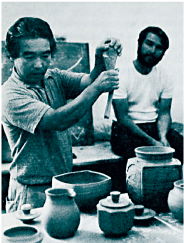
In any analysis of Australian ceramics the abiding influence of Japan is of great significance and in this singular and fascinating relationship between the two cultures the figure of Shiga is prominent. For all the hundreds of Australian potters who took the ‘Mashiko express’ in the 1960s and 70s, Shiga was one of the few took the journey in the other direction. First in Mittagong, then in Sydney, he inspired and delighted Australian potters for the thirteen years he spent in this country. Even after his return to Japan in 1980, Shiga maintained close contact with Australia and with the many Australian potters who revelled in his company.
There are many Japanese potters that have won the admiration of Australian potters, but few who came as close in spirit to this country as Shiga. From Tokyo to Terrey Hills and back again is a fair way, but it was the journey that Shiga made, and we are grateful that he did.
Damon Moon
Willunga 2011
Editor’s note: In our Archive section, pages 98-100, I have reprinted Shiga’s farewell speech (from Pottery in Australia, Vol 18, No 2, October November 1979) given at the opening of his retrospective exhibition at the Japan Foundation Centre in August 1978 just before he returned to Japan after thirteen years in Australia.
Vale - Paul Soldner 1921 – 2011
In early January 2011, Paul Soldner, one of the greats of American ceramics, passed away at his home in Claremont, California. He was eighty- nine.
Born in 1921 into a family of Midwest Mennonite Christians, Soldner’s interest in art was sparked by his wartime experiences in the army medical corps, where, to quote Jori Finkel writing of Soldner in the Los Angeles Times, he saw ... “beauty emerge from terror in the form of charcoal drawings made by Holocaust victims on the barracks walls of the Mauthausen concentration camp in Austria”.
(Frinkel, J. Los Angeles Times 4 January, 2011)
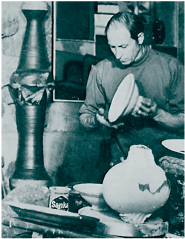
In 1954 Soldner became the first graduate student of Peter Voulkos in the newly established ceramics program at the Los Angeles County Art Institute. Like Voulkos, Soldner was given to experimentation and innovation and was also something of a showman, soon becoming what Garth Clark refers to ... “as one of the stars of the “workshop circuit”. (Clark, G. Shards, p.289)
It was during one of these workshops that Soldner famously ‘discovered’ his technique of ‘American raku’, where pots were drawn from the kiln and then ‘smoked’ in various ways to produce a range of effects much broader than those found in the original Japanese technique. But Soldner’s oeuvre extended well beyond this, encompassing a wide range of ceramic techniques and forms.
Paul Soldner was a charismatic teacher and tireless maker who came to prominence at a time and in a place when ceramics was breaking many boundaries. He continued to contribute to the development of ceramics both in the United States and on an international level throughout a long and productive life, and he will be both celebrated and missed.
Damon Moon
Willunga 2011
Perspective
“I cross the room like a dancing architect
A daddy waltz on the tops of my shoes ...”
Let’s face it – architects are cool. They wear good clothes, have distinctive taste in spectacles and build fabulous, titanium clad post-modernist cathedrals to art which rejuvenate entire cities. Even in the fraught and over-hyped world of contemporary art it’s obvious that the star attraction of the Bilbao Guggenheim is the building and its architect, Frank Gehry, and not the art inside.
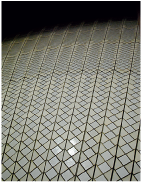
On the other hand, ceramists are not really cool and probably never have been. There may have been a certain cachet afforded to the hand-spun, tie-dyed and hirsute in the 1960s, but ceramics has really always been just this side of macramé as far as the mainstream arts establishment goes, and it probably always will be.
Given this, it might seem strange that in the early days of the post-war Australian crafts movement architects featured prominently in generating support for the crafts. They encouraged craftspeople to extend their vision by commissioning works for buildings, by helping with exhibition design, by collecting works to be shown in their own and in client’s houses, and by participating in an active dialogue as to how the built environment and the hand-made object might co-exist in the modern world.
Sydneysiders should be more aware of this than most, since they have in their midst one of the greatest examples of twentieth century architecture in the shape of the Danish architect Jorn Utzon’s Sydney Opera House, a building totally covered with white ceramic tiles. One might fairly ask if the tiles, made by the Danish firm Höganäs, are the product of craft or industry, or indeed are any more significant than the ubiquitous clay bricks from which the majority of Australian houses are constructed. But what this building represents, at least in part, is the emphatic arrival of a Scandinavian design aesthetic in Australia, and with it the promise of an integration of crafts and industry, an ideal which now probably falls into the category of ‘nice work if you can get it’ but which, nonetheless, had much currency at the time.
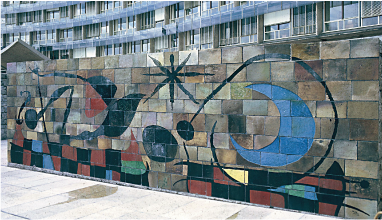

If only a few modern buildings were entirely covered with ceramic tiles – and, after all, the Muslim world had taken this technique to heights of extreme beauty and sophistication hundreds of years before – then the fifties and the sixties also saw a rebirth of interest in other ways to marry ceramics to architecture. One was in the use of mosaics, with perhaps the greatest example being Antonio Gaudi’s Guell Park in Barcelona, where the order and discipline or the traditional tiled ceramic surface is literally shattered into a colourful, fragmented universe of inspired crazy-paving.
A related use of architectural ceramics was found in feature walls or panels, which had the advantage of being able to be either outside or inside a building, due to the ability of ceramics to cope with harsh environments. The artistic partnership of the painter Joan Miro and ceramicist Jose Llorens Artigas gave us monumental outdoor panels in the 1957/59 Wall of the Sun and the Wall of the Moon for the Unesco Building in Paris, work so important that it led to Miro receiving a Guggenheim award in 1958. (Ironically, these artworks are now enclosed by a building in order to protect them from the effects of acid rain. Perhaps ceramics are not quite as durable as we think ...) Some Australian examples of public ceramics murals, as in Vincent McGrath’s three metre by eleven metre Wall, completed in 1980 for the Attorney General’s Department in Alice Springs, are mentioned in an excellent article by Romaldo

Giurgola, one of the architects of the new Australian Parliament House. This article, first published in 1984 and now reprinted in this issue of The Journal of Australian Ceramics, gives an insight into how one of this country’s leading architects sought to incorporate the work of Australian craftspeople into the very fabric of this important building (if that isn’t mixing metaphors) right from the planning stages.1
On a more intimate scale, the interiors of 1960s architect-designed modernist houses, with an emphasis on natural surfaces largely free from overt ornamentation, provide a wonderful setting for ceramics of the period. There is a certain ‘rightness’ in seeing stoneware ceramics displayed in this setting, whether as tiles, functional pottery or decorator pieces.
For example, in the ceramics of Marea Gazzard one sees a sophisticated take on the vessel as domestic sculpture. Before studying in Europe in the 1950s, Marea Gazzard, who was married to the architect Don Gazzard, had been exposed to the work of avant-garde British ceramic artists like Lucie Rie in the pages of influential architectural magazines like Domus. In England she had contact with Rie, as well as with the work of the artists Nicholas Vergette and Hans Coper, and it was Coper’s work in particular that deeply informed Gazzard’s ceramics on her return to Australia in 1960.
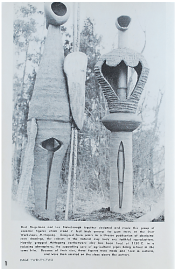
At the time, only a few Australian potters were experimenting with forms beyond the purely functional. It is true that many potters had made smaller scale sculptural pieces – John Percival’s famous Angel works are a good example – but it is a mistake to confuse this work with ceramics which have a more direct connection to architecture.
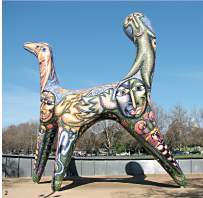
These connections are sometimes obvious, as in the incorporation of ceramics into a building or
its surrounds; at other times they are more indirect. Sometimes it is just a question of scale, as when the Austrian-born sculptor Bert Flugelman collaborated with Les Blakebrough on large scale ceramic sculptures that were made and subsequently exhibited at the Sturt Workshops in Mittagong. To pick a more contemporary example, Deborah Halpern’s well-known artwork Angel (not to be confused with the Percival ones), originally sited at the entrance to the National Gallery of Victoria and now found
at Birrarung Marr park on the banks of the Yarra River, is architectural in nature not only because of
its scale but through its intent, in that it was commissioned to be a part of a building or its immediate surrounds. This is seen quite literally in the visual pun of the sculptor Aleks Danko’s, Songs of Australia Volume 3, At Home sited in the courtyard facing the JamFactory Craft and Design Centre, the Experimental Art Foundation and the entrance to UniSA’s City West Campus in Adelaide.”
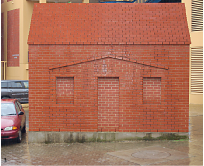
It seems likely that the emphasis has shifted in contemporary architectural ceramics in Australia, from large-scale public commissions to community-based projects. However, given the obdurate nature of the material and its intrinsic connections to the built environment, ceramics will probably always find some place in the architecture of the day.
Damon Moon
Willunga 2010
- I feel it is reasonable to claim Romaldo Guirgola as Australian since, although he was born and trained in Italy and has spent much time living in America, he took up Australian citizenship in the 1980s.
The Flying Scotsman
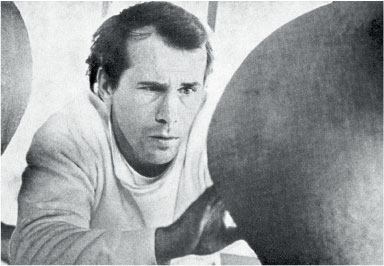
The last time Alex Leckie’s name was mentioned in dispatches, prior to news of his passing earlier this year, was in relation to the proposal in 2008 to close the ceramics department of the Glasgow School of Art.
Leckie’s name was inextricably linked to this institution. It was where he had begun studying in 1950 when, as the then Academic Registrar (Sir) Harry Barnes would later recollect, he was admitted ‘by the back door’, having shown a great deal of promise but possessing none of the normal qualifications to gain entry.1
It is unsurprising that the young Alex Leckie didn’t take to the disciplines of the post-war British education system, given his rather idiosyncratic upbringing. His father was an ardent communist and political activist who, nonetheless, instilled an appreciation of the arts into his son. The Leckie household library was extensive, containing several thousand books, and there were visits to art galleries and museums where he developed his appreciation of the work of ancient cultures, echoes of which would be found in his own ceramics in later years.
Leckie excelled at art school and was offered the chance to complete a Post-Graduate Diploma. A figurative vessel that was exhibited in that graduation exhibition is illustrated here, and demonstrates both his command of the medium and a remarkably early adoption of what would later become recognisable as his mature style.

In 1955, and in imminent danger of being called up for National Service, Leckie decided to move to Australia. Having relatives in South Australia he settled in Adelaide where he soon found employment throwing garden pots at Bennetts Magill Pottery, a job which he would later describe as providing ‘good discipline’.2 Enquiries at the South Australian School of Art led him to discover that he was the most highly qualified potter in South Australia, a situation which, rather ironically given his background, led to him being employed in 1956 as a teacher of ‘pottery and sculpture’.
It’s worth pausing at this stage to place Alex Leckie in the context of the early world of post-war Australian ceramics. When Leckie arrived in Australia, Ivan McMeekin, Ivan Englund, Peter Rushforth and Mollie Douglas were just establishing the Potters’ Society of NSW, Gwyn John (Hanssen Pigott) was still apprenticed to McMeekin at Sturt, Carl McConnell was active in Brisbane, Henri Le Grand was teaching in Canberra, Harold Hughan and members of the Boyd clan were taking their varying approaches to ceramics in Victoria, and there certainly were others – but not that many.
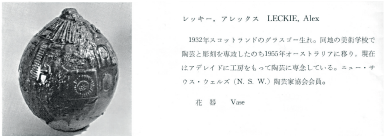
Considering where to place Leckie in this field is an interesting exercise. For a start, he was not a single-minded devotee of the Anglo Oriental approach espoused by Leach and Cardew, instead showing a preference for a modernist, European sensibility which brings to mind Picasso’s anthropomorphic ceramics. But Leckie also didn’t favour the rather commercial, high-keyed palette of earthenware, his surfaces instead relying on the subdued colours of clays and ochres, albeit enlivened by his use of colour and a marvellously dexterous feel for line and modelling. His ceramics refer back to the archaic forms which inspired him in his youth, where man and beast, male and female, entwine and merge in a sensuous dance with the medium of clay.
For all his undoubted technical and artistic abilities and a myriad of friends and supporters within the arts community, Leckie’s rebellious nature ensured that his tenure within the South Australian education department would not be without problems.
The by now well-known episode of Leckie swimming naked in the River Torrens and of his subsequent arrest (a seemingly trifling incident which provided front page titillation for the tabloid press and ultimately led to Leckie’s dismissal from his teaching post in 1962), introduced a surprisingly productive period during which he exhibited widely, undertaking many important commissions and becoming President of the Contemporary Art Society of South Australia. In 1964, he was one of three Australian ceramicists chosen to represent this country in the International Ceramics Exhibition in Tokyo, with his work, Destroyed City also appearing on the cover of Pottery in Australia. 3 4
In 1966, Alex Leckie decided to return to Britain. He spent a short time in London at the Central School of Art before returning to Scotland, where he was appointed Head of Ceramics at the Glasgow School of Art in 1968, a position he held for the next twenty years.
In an obituary published in The Scotsman, Jimmie Macgregor wrote that Alex Leckie ‘ ... took a moribund ceramics department by the scruff of the neck, completely transforming it and turning out students who were a credit to the school.’5
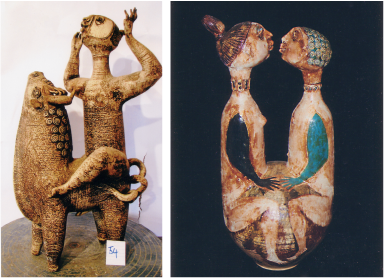
In all fairness, the Glasgow School of Art probably deserves considerable credit for keeping Leckie on staff for twenty years, as this ‘... wee bull who caused havoc in many a china shop ...’6 would certainly find difficulty adapting to today’s more politically correct academic setting. No more would a whole pig be roasted in the kiln as a contribution to Activities Week, but perhaps the managerial class which now largely controls the directions of art schools, on either side of the world, will doubtless rest easier at night.
When he left this country in 1966, Leckie was as well-credentialled as anyone, exhibiting nationally in prestigious galleries, working on architectural commissions and, above all, selling large amounts of his work to an appreciative public, all of which he achieved by the age of 35. He left behind many admirers, fond memories, some scandalous tales and an engaging and highly accomplished body of work. It is
to be hoped that an opportunity might exist in the not too distant future for the current generation of Australian ceramicists to be able to see a comprehensive exhibition of the work of Alex Leckie.
Damon Moon
Willunga 2010
- ‘Alex Leckie Ceramics’, an essay by Sir Harry Jefferson Barnes accompanying an exhibition at the St Enoch Exhibition Centre, Glasgow Museum and Art Gallery.
- Ceramics in South Australia 1836 – 1986; from folk to studio pottery, Noris Ioannou
- Destroyed City by Alex Leckie, cover image, Pottery in Australia, Vol.3 No.2., October, 1964.
- In the end, four Australian potters were included in the International Exhibition of Ceramic Art in Tokyo – Alex Leckie, Milton Moon and Bernard Sahm were chosen by the various Australian selectors, whilst the Canberra-based potter Cecily Gibson was included following her extended residency in Japan.
- Appreciation: Alex Leckie, Jimmie Macgregor, The Scotsman, 12 February 2010
- ibid
Bennetts Magill Pottery Pty Ltd – a living history
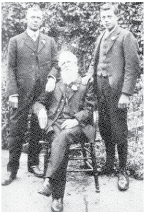
Photos: courtesy Mortlock Library, South Australia
Currently in its fifth generation of family ownership, Bennetts Magill Pottery in Adelaide provides one of the last remaining glimpses into the small- to medium-size manufactory that was the mainstay of Australian ceramics throughout the nineteenth and into the first part of the twentieth century.
The founder, Charles (Chas) Bennett, was born in Somersetshire in England in 1842. In 1849 he travelled with his family to the newly established colony of South Australia, settling in Magill, then a semi-rural area a few miles east of the centre of Adelaide. Good supplies of clay, as well as abundant fuel in the shape of the string-bark forests cladding the adjacent hills, ensured the area quickly became home to a number of potteries, established to fulfil the needs of a rapidly growing population.
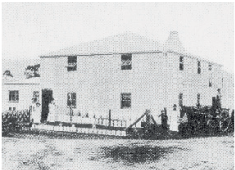
Photos: courtesy Mortlock Library, South Australia
The young Charles Bennett gained an apprenticeship at just such a pottery, run by a Cornish immigrant, third-generation potter named John Henry Trewenack. From the age of twelve, Bennett worked at Trewenack’s, first as an apprentice then as a full employee, where he spent many years learning about all aspects of the craft. In 1883, Charles Bennett, together with his son, William Charles Bennett, worked for a time at the nearby Piercy brothers pottery and it was there that the young William Bennett met his future wife, Abigail Piercy, forming a union that perhaps ensured the future importance of ceramics to the Bennett’s clan. Clay, it seems, was in their blood.

photo: courtesy Bennetts Pottery
Following the death of William Piercy in 1885, the business went into decline, prompting the Bennetts to finally establish their own pottery on land the family owned at Magill. The pottery started trading at a date towards the end of the 1880s (the actual date is given variously between 1887 and 1890). Initially consisting of a shed, a horse-drawn pugmill and a small wood-fired kiln, the Magill Pottery Works, as it was called then, was gradually expanded to include a bottle-kiln, larger workshops and some mechanisation in the shape of steam or oil driven engines, thus relieving the horse of its more burdensome duties. Further equipment was added with the purchase of new throwing wheels manufactured by the English company of William Boulton Ltd, by which stage the pottery, now called C. Bennett and Sons, was producing a vast range of the kind of useful, no-nonsense pottery needed by homes, farms and industry – bread crocks and mixing bowls, preserving jars, acid, wine and spirit jars, butter coolers, poultry waterers, and garden and chimney pots.
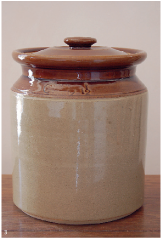
During the 1920s and 1930s, the pottery, now under the management of William Bennett, continued to increase the range of goods on offer. In addition to an assortment of terracotta pots there were several types of glazed domestic wares, although, in keeping with the mainstream of Australian ceramic practice, no fine dinnerware was produced, this market being met by imported English ceramics. Further to this, a range of highly successful ‘art pottery’ was produced, with vases and other decorative items being glazed in a variety of mottled and streaked lead-based colours, often referred to as Majolica or agate wares.
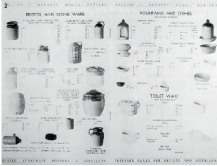
photo: Damon Moon
There were, however, setbacks. On the morning of 27 November 1940, a fire razed the building to the ground, leaving a total damage bill of around ten thousand pounds. The pottery was rebuilt, but by the time an official of the Department of Mines visited the factory in 1946, the pottery had returned to its core production, where:
Bennett’s products are largely confined to a stoneware and coarse domestic ware. Acid jars are thrown on the wheel ... Bristol ware is ... [made] ... from Tea Tree Gully clay with some Woocalla ball clay added to extend the vitrification range.1
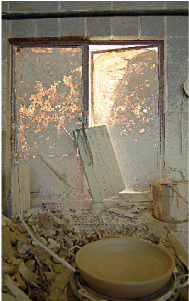
By 1950 the pottery was being run on a day to day basis by the third-generation William Reginald Bennett. The kilns were now fuelled by oil, which, unfortunately, did not prevent a second massive fire from destroying the pottery in 1956. Reginald Bennett seriously considered whether to rebuild the pottery, but since his own son, Robert William Bennett, was now working at there, it was decided that the business would continue.
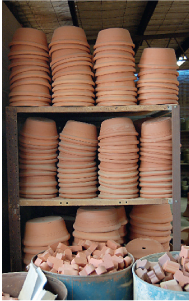
In 1964, Robert assumed control, in a marketplace where conditions were changing rapidly. Although the majority of garden wares used in Australia were still produced locally, the lifting of post-war restrictions had allowed an ever greater amount of imported ceramics to enter the market, a move which led to the demise of many of the small manufactories which had sprung up in the immediate post-war years. Bennett’s responded to this decline by diversifying their manufacturing base, for a time even supplying bricks to a booming building industry, but also, conversely, by sticking to their guns and continuing to make a range of utilitarian pots almost identical to those they made in the late nineteenth century. A growth of interest in the crafts throughout the 1970s saw these traditional pots come back into fashion, while the proliferation of ceramics courses and increasing numbers of practitioners provided a ready market for Bennett’s clay. With the closure of Koster’s Pottery in 1977, Bennett’s was left as the sole South Australian pottery operating along more or less traditional lines.
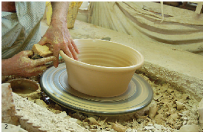
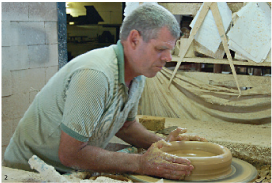
In the mid-1970s, Robert’s son, John William Bennett, became the fifth generation to work at the pottery, and he now runs the business in a family lineage that spans three centuries. The last twenty or so years have seen added pressure on the business from imported garden wares, but Bennetts endures, providing a fascinating link to the vernacular ceramic traditions of the past.
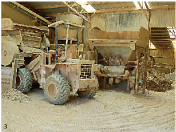

Photo: courtesy Bennetts Pottery
Damon Moon
Willunga 2010
A Family Affair – the Boyds and the History of Australian Ceramics
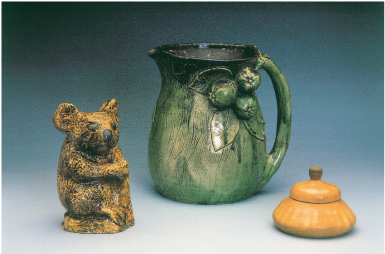
If Australia can lay claim to having an artistic dynasty, it is to be found in the Boyds. This country has produced many worthy artists but there is no other family that can boast members who rose to prominence in the fields of painting, literature, architecture and ceramics, and did so over several generations.
It is well known that many of the Boyds made ceramics, but what is unusual is the depth of their familial or collective involvement and the way ceramics were seamlessly integrated into a life of rich artistic endeavour. The Boyd’s involvement in the arts can be traced back to the late nineteenth century, to Arthur Merric Boyd snr and Emma Minnie Boyd1, both accomplished painters who had studied at the Royal College of Art in London. They had three children: Martin, who would become a well-known novelist, Penleigh, who was hailed as one of Australia’s most promising young painters until his untimely death in 1931, and William Merric, who would become the first Australian artist potter.
As a young man, William Merric Boyd (who is generally just known as Merric Boyd) studied art at the National Gallery School in Melbourne. Legend has it that during a trip to a commercial pottery to buy modelling clay for a sculpture class he was asked if he would like to try his hand at throwing a pot. It is recorded that he threw a perfect pot at his first attempt, an event that has undoubtedly been subject to exaggeration over the years, but nonetheless points to an early affinity for the medium of clay.2 Merric Boyd decided to become an ‘art potter’, working from a studio on a block of land the family purchased for him at Murrumbeena, a suburb then on the semi-rural outskirts of Melbourne. In 1912 Merric Boyd became a part of ceramic history by holding the first one-person exhibition of pottery in Australia at Centreway, a gallery in Collins Street in Melbourne. In 1915 he married Doris Gough, a fellow student from the National Gallery School, and she went on to work closely with Merric Boyd, decorating many of his ceramics over the subsequent years. By the time Merric Boyd left Australia in 1917 to fight in the First World War he was already a well-known ceramic artist.
Following his discharge from the army in England in 1918, he spent a year studying at the Wedgwood factory in Stoke-on-Trent, financed by a Commonwealth Rehabilitation Grant. On his return to Australia he resumed work at Murrumbeena where his ceramics met with considerable success. In keeping with the times he worked in earthenware, throwing pots which were then heavily modelled and decorated – often by Doris Boyd – in a faux-naïve style replete with references to Australian plants and animals. Although he was sometimes able to sell work for considerable sums, his financial position was always somewhat precarious (no surprises there), leaving the Boyds and their growing family living in ‘an indefinable, vaguely Boehemian style of artistic poverty.’3
All of Merric and Doris Boyd’s children – Lucy, Arthur, Guy, David and Mary – learned the elements of pottery at an early age, helping out in the family business. Following the end of the Second World War the pottery entered a new phase, with the young Arthur (Merric Bloomfield) Boyd, in partnership with his colleague and friend John Perceval4, establishing a new workshop next to the now disused Open Country pottery, which they named after Arthur’s grandfather, calling it the Arthur Merric Boyd Pottery. Together with the Viennese émigré Peter Herbst5, they manufactured goods for the Ministry of Labour and National Service, as well as making individual art pieces.
During the 1940s, the Boyds’ encampment at Murrumbeena became a haven not only for the family but also their friends, ‘becoming more and more a loose colony of artists and intellectuals – one of the very few enclaves ... to offer protection to radical modernists.’6 A similar group of artists gathered around John and Sunday Reed at Heide, a farmhouse located in the outlying Melbourne suburb of Heidelberg. There was some interaction between the two groups, with the artists Sidney Nolan, Albert Tucker and Joy Hester7, all names closely associated with Heide, visiting the Boyds at Murrumbeena. In addition, many figures who would go on to be well-known figures in Australian ceramics worked at or at least had contact with the Boyd workshops, including Carl Cooper, Tom Sanders and Hatton Beck.
David Boyd, who was a talented pianist, initially studied music at the Melbourne Conservatorium. In 1945, following his military service, he transferred his Commonwealth Retraining Grant to the National Gallery School where, following in his parents and grandparents footsteps, he embarked on a career in the visual arts. Studying drawing under the famous but rather conservative artist and teacher Sir William Dargie, Boyd soon rebelled. He moved to Sydney where one of his brothers, Guy, had already re-located in order to study sculpture at the National Art School with Lyndon Dadswell. During 1946 the two brothers became involved in a pottery enterprise, with David making a final move to Sydney in 1947. The colourful, popular ware they made was sold under the name of Martin Boyd Pottery, again following a confusing family tradition of naming workshops after members of the family who actually have no ties to the business being conducted, in this case David’s expatriate novelist uncle.
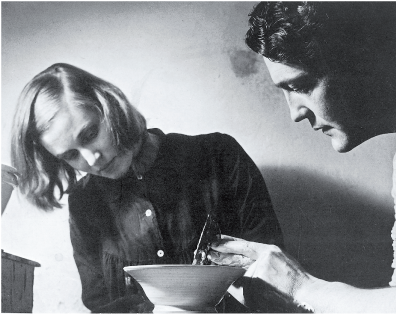
In the period between David’s initial contact with the business in 1946 and his return to Sydney in 1947, Guy had employed several fellow students from the National Art School to help in the workshop. One of these was Hermia Lloyd-Jones, a young and precociously talented artist who came from a family background that bore some similarities to that of the Boyds.
David and Hermia soon became a couple in life as well as in ceramics. In addition to the successful commercial ware, they began work on a group of ceramics primarily intended for exhibition and, in 1949, these works were shown at the Little Gallery at the David Jones department store. The Daily Telegraph’s art critic wrote:
‘It is rare to find produced in this country works of art which may, in both technical and aesthetic achievement, be judged by world standards. In the pottery of David and Hermia Boyd, that distinction is reached ... It is a show not to be missed by collectors and those who are interested in the beginning of an epoch in Australian art.’8
In 1950, David and Hermia Boyd, as so many other Australian artists had done before them, travelled to England. Having obtained a licence to sell their pottery from the Board of Trade, issued9 through the Crafts Council of Great Britain, they soon found a ready market for their pottery in many fashionable London outlets. The British trade journals Pottery and Glass and Pottery Gazette featured their work, as did several lifestyle magazines and they were able to obtain a lucrative licence to produce items for the 1951 Festival of Britain.
During this period the Boyds also spent a year in France, making pottery in the small village of Tourrettes-sur-Loup, positioned midway between Cannes and Nice in Provence. Returning to England, the Boyd’s resumed potting, including an exhibition at the Barling’s gallery in Mayfair and a stint designing work for the resurrected Chelsea Pottery, but, following a particularly cold English winter, they felt the urge to return to Australia. After rushing to fulfil a final order for Heals department store – worth around £3000, a very large sum of money for the time – the potters ‘returned in triumph to their homeland’.10
The Boyd’s successes abroad had been closely followed by the Australian press and their homecoming was accompanied by a blaze of publicity, or at least as much publicity as might reasonably be accorded to a pair of potters. The first exhibition held on their return, again at the Little Gallery at David Jones department store, was favourably reviewed, with The Herald’s art critic, Alan McCulloch, reporting that the pottery was ‘quite exquisite in design, shape and finish, and in fact much superior to anything of the kind that has so far been shown here.’11
Over the next five years, David and Hermia Boyd continued to have regular sell-out exhibitions in the major cities, extending their formal language based on high-fired earthenware, original forms and decorations based on a marvellously fluent graphic sensibility and an extensive use of oxides (in particular manganese and copper) applied over or inlaid into commercial glazes.
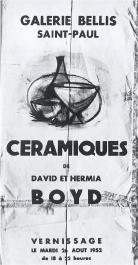
At this point, in the mid to late 1950s, the stoneware pottery movement was in its formative stage with Harold Hughan in Melbourne and Ivan McMeekin and Peter Rushforth in New South Wales. By contrast, David and Hermia Boyd had around fifteen years of highly successful, innovative and lucrative ceramic practice behind them in England, France and Australia, with a string of sell-out shows meeting with critical acclaim, and involvement in commercial enterprises that had sold thousands of pieces of pottery. They were so far ahead of the game it’s difficult to see how, within another few years, they would be almost overlooked by the burgeoning Australian ceramics movement, and yet that is precisely what occurred.
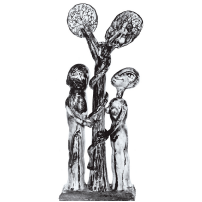
Partly, this is because they decided to return to Europe in early 1962, following the awarding of an Italian government painting prize to David, who was increasingly concentrating on sculpture and painting as expressive mediums. At the end of this year the Boyds returned to England, where they would remain for much of the 1960s, and although they would continue to make ceramics to supplement their other artistic interests, their contribution to Australian ceramic life was effectively resigned to history.
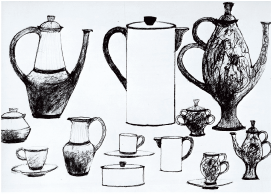
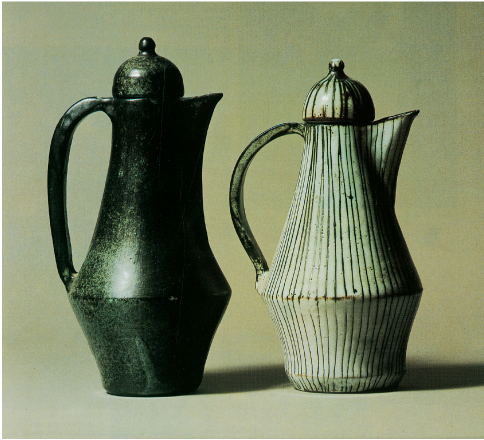
Another reason David and Hermia Boyd’s contribution to Australian ceramics was overlooked was simply because they had worked exclusively in earthenware, when the orthodoxy of Leach-inspired Anglo Oriental ceramics was at its zenith. Colourful, earthenware ceramics, no matter how well done, were deemed to be old-fashioned, crass even, by the exponents of Antipodean Sung, who somehow overlooked Leach’s own enthusiasm for English slip-wares, which of course were also earthenware. For their part, David and Hermia Boyd held similar prejudices, having seen and dismissed much of British studio ceramics in the 1950s as being rather amateurish essays in a ‘recently evolved tradition’12,
with Hermia remarking on the preponderance of ‘Japanese squiggles or the Leach-introduced Eastern hieraglyphic [sic] for ripening corn’.13
Therefore, when the journal Pottery in Australia was first published in May 1962, with editor Wanda Garnsey taking pains to ‘acknowledge the stimulus of Bernard Leach’s personality ... following his visit to Sydney’14, it’s hardly surprising that the recent, spectacular contribution of two generations of Boyds would be ignored, as indeed it was for many years to come. It is therefore entirely fitting that this article appears in the successor publication to Pottery in Australia and I can only hope that the contribution of the Boyds, and in particular that of David and Hermia Boyd, is re-assessed and appreciated by a new generation of Australian ceramic artists.
Damon Moon
Willunga 2009
- Emma Minnie Boyd nee a’Beckett, daughter of the first Chief Justice of Victoria, Sir William a’Beckett.
- Vader, J, p.18
- Niall, B, The Boyds: a family biography, Melbourne University Press, 2002
- Both Arthur Boyd and John Perceval went on to become very well-known and respected painters.
- Herbst went on to become Professor of Philosophy at the Australian National University and a founder of the Humanities Research Centre.
- Cochrane p. 70
- Sir Sidney Nolan, Albert Tucker and Joy Hester all become well-known painters. Sidney Nolan was also married to Mary Boyd.
- Vader, J p.27
- The Boyds’ licence to trade was issued by the Crafts Council of Great Britain against the wishes of its Director, the potter Heber Mathews. For a revealing glimpse into post-war British craft politics, see Vader, J, pp. 37–39
- ibid p. 107
- ibid p. 113,114
- ibid p. 36
- ibid p. 37
- Garnsey, Wanda, Editorial, Pottery in Australia, Vol. 1 No. 1, 1962
And then came Funk
Introduction
This is an essay about the introduction of funk ceramics into Australia and the affinity this work found in the social, artistic and political environment of Adelaide in the late 1960s and 1970s.
For those not familiar with the term, funk ceramics describes sculptural work that combines a Pop Art sensibility with the history of ceramics as a decorative art. At its inception it could even lay claim to being a regional art form, centred around San Francisco, where its iconoclastic, stoner style drew on the street culture, comics and band posters of early hippydom, as well as finding a parallel in the work of fine artists like Ed Kienholz, William Wiley, Claes Oldenburg, Billy Al Bengston and Robert Rauschenberg.
Arriving in Australia at the end of the 1960s funk adapted to local conditions, morphing into the idiosyncratically titled ‘Skangaroovian Funk’, a term derived from ‘Skangaroovia’, which (believe it or not) was an alternative name for South Australia suggested by Daniel Thomas, Director of Art Gallery of South Australia from 1984 to 1990. The title was then retrospectively applied to this ceramics movement in a small, but important, survey exhibition, curated by Judith Thompson, at the Art Gallery of South Australia in 1986.
The grungy, low-tech feel of San Franciscan funk was soon left behind as these new ceramics became sleeker and more theatrical, an approach epitomised in the politically and sexually charged ‘porcelain confection[s]’ of Adelaide artist Mark Thompson.
There surely have been few Australian ceramic movements which echoed so perfectly the artistic and social temperament of a time and place as Skangaroovian Funk did so for Adelaide in the 1970s. Funk was the contemporary Medici porcelain for a city that the sculptor Bert Flugelman had christened “Florence on the Torrens”, a play on Adelaide’s nickname as the “Athens of the South”. Skangaroovian Funk was variously decorative, political, inventive, daggy, provocative, impressively-crafted and camp as a row of tents.
Although looming large in the annals of South Australian art history, this period is not necessarily a comfortable place to revisit, but it is always instructive to reacquaint oneself with the avant-garde, if only to see how it has aged.
Origins
The word ‘funk’ has several meanings. One, not used much anymore, is to be frightened of something or to show cowardice. English speakers would say they were ‘in a funk’ if they were sulking or frightened or otherwise out of sorts.
In America, funky is a colloquial expression for something that smells or tastes bad, although the term is also slang for the taste and smell of sex. This usage is still apparent today, as when the character Samantha on the series Sex and the City complains about … oh, never mind.
Funky also suggests a kind of fashionable but casual style (maybe the newest incarnation of this is the ‘hipster’) but by far the most common use of the word is in the context of funk music ‘… an up-tempo style of … music originating on the west coast of America …’, and then there is also funk-art, ‘… a style of art originating on the west coast of America which reacted against the more rigid New York style of abstract expressionism … a regional variant of pop art.’
It’s certainly true that funk art never set out to be classically beautiful or well-crafted, grand, weighty or profound. It set the bar lower than pop and then slid right on under, mating the cartoon-like, flaccid-fakery of Claes Oldenburg’s soft sculpture to the low art forms of advertising, underground comics and the detritus of street life.
Born in San Francisco, funk was officially christened by the writer and curator Peter Selz and the artist Harold Paris in two 1967 articles for Art in America; Selz’s ‘Funk Art’ and the evocatively titled companion essay from Paris, ‘Sweet Land of Funk’, both of which appeared under the single title ‘West Coast Report: Funk Art’. Peter Selz, in his 1985 review of Thomas Albright’s book Art in the San Francisco Bay Area 1945 – 1980, noted that all throughout the 1950s and 1960s West Coast artists felt that they were working outside of the mainstream
‘… artists were willing to take greater chances … they dwelled in … the “Sweet Land of Funk”. The artist … is aware that no one really supports the work. So, in effect, he says Funk!’
Introducing ceramics into the equation, Selz goes on to write that
‘It was in the Bay Area that Peter Voulkos and his extraordinary group of disciples raised ceramics to the non-utilitarian, i.e. aesthetic sphere … at the very time when New York critics, painters and collectors under the tutelage of Clement Greenberg extolled the sanctity of the flat surface.’
This is not quite right, in that Volkous had already reconfigured ceramics in the spirit of abstract expressionism during the years he spent at the Los Angeles County Art Institute (later renamed the Otis Art Institute) from 1954 to 1959. This initial revolution was therefore Southern Californian and centred around Los Angeles, not San Francisco.
Collette Chattopadhay, in her article for Sculpture Magazine, quotes Voulkos as saying that ‘” … there was a certain energy around L.A. at the time …” … The laissez-faire characteristic of the city, without the expectant pressures of gallery shows and sales, granted time, space, and an artistic permission that was intrinsic to the clay revolution.’
If Voulkos, the budding demigod of American ceramics, was responsible for bringing the macho energy and physicality of abstract expressionism to clay, the origins of funk can also be traced fairly accurately.
In 1961 Robert Arneson was teaching craft and design at Mills College in Oakland, California, just across the bay from San Francisco. ‘While demonstrating throwing a pot at the Sacremento State Fair, Arneson topped a small, traditionally thrown bottle with a bottle cap and added the text “No Deposit, No Return”,’ in a comic and subversive gesture that would later resonate as powerfully through the ceramics community as the grandiloquent statements of Peter Voulkos or the hybrid Anglo Oriental style espoused by Bernard Leach.
Later that year, Arneson was appointed to teach ceramics at the University of California’s Davis campus on the outskirts of San Francisco. Although the art department was relatively new, this didn’t extend to the building in which Arneson found himself; a long, low structure which had variously been used as the campus post office, police station and as a store for experimental canned and packaged foodstuffs. This humble building, known as TB9
(Temporary Building Nine), would provide the setting for a generational shift in style which would echo around the art world, or at least the relatively small part of the art world that concerned itself with ceramics.
Arneson recognized that despite - or maybe even because of - the lack of facilities or long tradition, Davis was a place where he could do exactly what he wanted, so he set about creating a ceramics department where experimentation was not just encouraged but demanded, where …’Anarchy reigned. No overwhelming structure or “curriculum” … hamper[ed] … your creative flow. … Bob just sort of sat back and let it all happen.’
Arneson soon achieved notoriety when, given the chance to exhibit with Voulkos and John Mason in a show called California Sculpture curated by John Coplans at the Kaiser Centre in Oakland, he decided to make a toilet.
‘I cut myself loose and let every scatological notation in my mind freely flow across the surface of that toilet.’
The work, originally titled Toilet and re-named Funk John about two years later, was removed from the exhibition, following objections expressed by the Vice President of Kaiser Industries [ … no, I’m not making this up …] that the piece …’ attack[ed] American capitalism …’ an interesting notion given the strong symbolic relationship between shit and money, not to mention the subsequent high value of Arneson’s work on the secondary market.
Following on from Duchamp’s seminal Fountain of 1917 and Arneson’s Toilet, it’s a pity that no one has managed to cause offence with a bidet, thus completing a trifecta of art historical controversy in sanitary ware.
Arneson had many talented students in the early days at Davis. Bruce Nauman would go on to be one of the most important conceptual artists of the last quarter of the twentieth century. There was also David Gilhooly, one of Arneson’s first students who himself became a teacher, and who continued to be associated with Davis and the Funk ceramics movement for several decades. In fact, the roll call of early students reads like a who’s who of Funk ceramics; Chris Unterseher, Stephen Kaltenbach, Peter Vandenberge, Seymour Howard, Roy de Forest, Richard Notkin, but there was one student in particular who provided the connection between what was seen to be the cutting edge of American ceramics and Adelaide in the late 1960s, and that person was Margaret (Helen) Dodd.
The South Australian Connection
Dodd had arrived in California on the Fourth of July, 1965 in the middle of a heatwave, not exactly unfamiliar weather for a South Australian, albeit at a strange time of year. She had originally studied at the South Australian School of Art and worked for four years as an art teacher before travelling to the USA, where, after several moves, her husband had gained employment in the University of California’s physics department at the Davis campus. Given her status as a ‘faculty wife’ Dodd could audit or sit in on subjects without being formally enrolled. She initially chose to study sculpture and so found herself working in TB9, since that building housed both the sculpture and ceramics facilities
At first Dodd studied a range of different techniques, working with metal and wood as well as making wheel-thrown pottery, but it was during a ceramic sculpture course with Arneson she was set an assignment to make a ‘double illusion’, thus initiating a course of work that would last up to the present day. Dodd had recently seen the American artist Dennis Openheim’s work Funk Truck, a cab-truck shape in foam rubber on a wood core and covered with polka dot and leopard skin fabric. She took the idea one step further and made a Fake Funk Truck out of clay, a piece which certainly qualified as a double illusion, and then some. Even the title was in keeping with the spirit of funk, where punning was all the rage and the idea of the ‘fake’ was gaining an artistic and theoretical credibility, a concept aligned with pop art and quite at odds with the basic theoretical tenets of the movement that preceded it, that of abstract expressionism.
In 1966 Dodd formally enrolled in the ceramics course, where she continued to make ceramic automobiles; ‘Buicks, Oldsmobiles, Cadillacs … and a “run of VWs, beetles and buses”’ work that was readily accepted by her peers and that placed her at the centre of American funk ceramics. Her work was included in important exhibitions, including the 1966 survey show Ceramics from Davis, put on by the American Craftsmen’s Council at the Museum West Gallery in San Francisco.
Given her involvement in an exciting new ceramics movement that was quickly gaining critical momentum, it was with some reluctance that Dodd faced the prospect of returning to Adelaide, again following her husband’s academic career. Soon after her graduation from Davis in 1967 she found herself living in the Adelaide suburb of Holden Hill, where, according to Judith Thompson, ‘…pregnant and with time to herself, she found she had time to reflect on the experiences of being a woman in Australia’.
Nonetheless, she was back in her home town and, artistically-speaking, she had to make the best of it. Drawing on her experiences of California funk, feminism, Australian automotive history and (perhaps subliminally) childhood memories of her father’s stint as a car salesman with Wakefield Motors, Dodd started to make a body of work that would ensure her place as the icon - or perhaps the hood ornament - of Australian funk.
Skangaroovia – it’s our state, mate!
The environment Dodd found herself in was not entirely philistine. South Australia was undergoing a kind of cultural renaissance, due in part to the artistic leanings of the newly appointed Premier, Don Dunstan. In the days when very few cities actually had festivals, the Adelaide Festival of Arts had an international standing. There was also the South Australian School of Art, an institution with a history dating back to 1856, its own purpose built premises on the fringes of the city and an eclectic mix of staff, many of whom had at least a passing interest in ceramics.
In 1963 the American ceramist Ben Kypridakis took over the teaching of ceramics in the new art school building in Stanley Street, North Adelaide, but it wasn’t really until the arrival of the British artist Bill Gregory in 1966 that a Pop sensibility began to creep into South Australian ceramics. Gregory sought to
‘…break down the conventional concepts of ceramics held by staff and students. Functional ceramics did not interest him … Instead, he was interested in an intellectual or object-making approach to ceramics. He devised a set of exercises, designed to develop “conceptual attitudes” in his students …’.
No one came up with a ‘fake funk truck’ in response to his methodologies, but they could well have done. Gregory’s own ceramics, according to Patrick McCaughey’s review of his 1968 exhibition at the prestigious Pinacotheca gallery in Melbourne, were ‘ … splendidly hideous and marvellously useless, taking the mickey out of Arts and Crafts pottery … ‘.
Or, to quote Donald Brook
‘There are far few spectator sports more agreeable than watching someone stride up to a holy cow and kick it in the slats so shrewdly that the sawdust dribbles out. Studio pottery is just such a sacred animal, and Bill Gregory … is the man with the deft boot … his pots are absolutely useless … as refreshing as drought-breaking rain after an aeon of cider jugs with bucolic bodies like boiled oatmeal and orchid jars in a sensitive toffee temmoku.’
One begins to sense a pattern here in the critical reception of funk, at least amongst a group of curators and theorists for whom the positioning of functional pottery within the fine arts had always been problematic.
During this period there were other artists, many of whom were involved with the South Australian School of Art, either as students or teachers, who took a somewhat unorthodox approach to clay.
One such person was Bill Clements, a sculptor who had lived and studied in Japan from 1964 to 1967, arriving at the South Australian School of Art in 1968. Clements worked in a variety of mediums, but clay always played a central part in his practice, where his observations of the avant-garde Japanese ceramics movement brought an entirely different sensibility to that normally associated with Japanese pottery. Another was Ian Smith, who used traditional techniques such as wood-firing in a very non-traditional manner, as in his 1968 work The Generals which commented on the Vietnam War. Ron Rowe made ceramic objects inspired by machine parts and Aleks Danko, a young and precociously talented sculpture student, made several early works in ceramics, amongst which his series of ‘shoes’ and ‘numbers’, circa 1969, clearly showed the influence of Bay Area funk in their bright colours, offhand modelling and a kind of un-sophisticated or even slightly childish inventiveness.
Another student from the art school, Jim Cowley, exhibited a series of Shrines at the Llewellyn Gallery in 1971, the same year that Olive Bishop began working privately with Dodd at her College Park studio. Whereas Dodd had chosen the automobile as the appropriate vehicle to convey her ideas, Bishop fixed on the motif of the shirt and coat. She is perhaps best-known for her Wash and War series of ceramic shirts, based on uniforms emblazoned with medals (literally decorations) that parodied militarism, particularly in the context of the Vietnam War.
In 1969 Milton Moon had been appointed senior lecturer in charge of the ceramics department of the South Australian School of Art. He combined a commitment to traditional workshop skills with a personal body of work that, although often exploring the formal boundaries of pottery, remained philosophically based in the modernist tenets that had informed the development of ceramics within the crafts movement. At that time, Moon was deeply interested in traditional Japanese ceramics and in exploring the origins of the aesthetic philosophy that had informed their development. Many of his students revelled in this learning environment, but some did not.
Mark Thompson was one of the latter. Previously a student at the National Art School in Sydney, in 1973 Thompson enrolled in the Diploma of Painting at the South Australian School of Art. Although during this year he spent much of his time in the ceramics department he was not formally considered a student of the department and therefore was free to pursue his own directions in clay as an extension of his painting practice.
Moon spent the following year studying in Japan and it was during this time that students like Mark Thompson (who was now formally enrolled in the ceramics course) and fellow student Paul Greenaway, together with artists such as Margaret Dodd, Olive Bishop and Bruce Nuske (an ex-student of Moon’s who had graduated in 1972) were finding that their irreverent and satirical take on ceramics was becoming an accepted part of mainstream Australian crafts practice.
Thompson’s work began to make extensive use of dolls, moulded and cast in white earthenware clay or in porcelain. Highly finished and precise, one gets a sense that the original devil-may-care ‘Funk!’ attitude of Arneson and his followers had been replaced with a very calculating approach, one that left nothing to chance. His ‘China Cabinet Objects’ show Thompson using his already formidable skills in painting and modelling to draw on the history of industrially produced ceramic sculpture, which he then parodies to create objects that are quite literally inverted and made strange. For example, a rather trite, traditional sculpture depicting a child sitting amidst a cornucopia of fruit is subverted by turning the infant on its head, so that one sees a pair of legs pointing skywards, pinned between a couple of ceramic bananas and a pear. Beautifully done, and amusing enough in its own way, but really no more profound than the work it parodied. Thompson, however, was just getting started.
His 1976 Jam Factory Gallery exhibition Ceramics and Porcelain Dolls must have been amongst the very first ceramics exhibitions in Australia to delve into the realms of installation art, where entire sections of the gallery space became an integral part of the work.
The main section of the gallery contained a series of his impressive ceramic sculptures, while in a darkened room the small, white bodies of ceramic dolls lay amongst a carpet of eucalypt leaves on the floor, the atmosphere reeking of what - in a kind of weird, tangential Californian connection - the great American crime writer Raymond Chandler would describe as ‘ …that peculiar tomcat smell that eucalyptus trees give off in warm weather.’
It was a show that, once seen, was not easily forgotten. Thompson’s work increasingly
‘expressed his personal beliefs and special views. Religion, politics, sex and art were all examined and realized in his work as personal metaphors. … These sculptural objects often departed from the brashness of the West Coast funk style … to become highly revealing personal images. They also tended towards producing shock or outrage in the viewer.’
Yet, in works like Thompson’s 1979 Ma Don Na we see his extraordinary skills giving life to sophisticated and witty observations on the machinations of local politics, an area in which he was also quite adept. Few artists, then or now, could even approach Thompson in terms of technical facility, and his work from the mid 1970s to the early 1980s represents the apotheosis of the final phase of Skangaroovian Funk.
Conclusion
In considering the legacy of funk ceramics in South Australia, one sees how the various strands have informed contemporary practice. If Gerry Wedd draws on Dodd as well as the spirit of Mambo (not quite one and the same thing, but there are strong similarities) then the refined technique and ornate approaches evident in Mark Thompson’s work find continuing expression in the studios of the Jam Factory; in the work of Robyn Best, the head of the ceramics workshops, as well as in the ceramics of Steven Bowers, the artistic director. Both Dodd and Thompson are still active, with Dodd recently having received an Arts SA Fellowship to work in China and exhibit in Sydney, and Thompson participating in Figuration, a group exhibition of ceramics at the held at Adelaide’s Jam Factory gallery in May.
Some forty years after funk first arrived in Australia, it has become a peculiar appendage to mainstream art history, a role to which it is possibly well-suited. Given the increasing diversity of contemporary practice, funk may yet be retrospectively evaluated and given a weight that escaped it at the time of its making. If this occurs, it will be fascinating to see what conclusions are drawn and what explanations are found for the prominence of Adelaide in this episode of Australian art history.
Damon Moon
Willunga 2009 (edited 2012)
Derived from ‘Skangaroovia’, a term coined in 1985 by Daniel Thomas, Director of the Art Gallery of South Australia from 1984 to 1990. see Campbell, L ‘Skangaroovia! Would you believe it’s our State, mate?’ The Advertiser 14/5/1985 p.1 also Editorial ‘That which we call a rose’ ibid.
Mark Thompson, one of the artists featured in the exhibition, also worked on the catalogue in his capacity as the in-house designer for the Art Gallery of South Australia.
McPhee, J ‘Sex, Politics and Religion – an aspect of pottery today’ Pottery in Australia Vol. 24 No. 1 1985, p. 5 Sydney, NSW
A very early type of soft-paste porcelain discovered around 1575 AD and associated with the Grand Duke Francesco I de’Medici. Only six pieces of porcelain from this first period of manufacture are known to exist.
Delbridge, A et al. 1991The Macquarie Dictionary 1988, p. 715, The Macquarie Library, Sydney, NSW
ibid
Selz, P ‘Funk Art’ Art in America March April 1967 p. 92, 93, Art in America, New York, NY
Paris, H ‘Sweet Land of Funk’ ibid pp. 94 - 98
Paris, H & Selz, P ‘West Coast Report: Funk Art’ ibid
Albright, T Art in the San Francisco Bay Area 1945 – 1980: An Illustrated History University of California Press, Berkely CA 1985
Selz, P review Art Journal Vol. 45 No. 1 Spring 1985 p 75,77
ibid
Chattopadhyay, C ‘Peter Voulkos: Clay, Space and Time’ Sculpture Magazine Vol. 20
No. 2 March 2001 International Sculpture Center [sic], Hamilton, NJ
Mayfield, S Big Idea: The Marquettes of Robert Arneson Palo Alto Art Center, CA 2002
In an interview with Ken Kelly, Arneson states that his work 1961 No Deposit, No Return was made without any knowledge of American artist Jasper Johns’ 1960 piece Ballantine Ale which depicted beer cans cast in bronze, stating that his own work was the result of ‘…goofing off …’, adding that this ‘.. was before Johns …’, which although not actually correct in terms of the dates, suggests that Arneson had no prior knowledge of Johns’ work. Interview by Ken Kelly http://www.verisimilitudo.com/arneson/bobart1.html
Notkin, R in Thirty Years of TB9: a tribute to Robert Arneson John Natsoulas Gallery Press, Davis, CA 1991
Arneson, R 1981 Robert Arneson Interviews, August 14 – 15, Archives of American Art, Smithsonian Institution, Washington, DC.
ibid
Dodd, M. Interview with the author, 2008
Dennis Oppenheim graduated with a MFA from Stanford in 1965. Funk Truck was first exhibited in early 1966 at an exhibition at Belmonte Galleries in Sacremento, California.
Thompson, J ‘Skangaroovian Funk: Peculiar Adelaide Ceramics 1968 – 1978 Pottery in Australia Vol. 25 No. 3 August 1986 p. 14, Sydney, NSW
Thompson, J ibid
Ioannou, N Ceramics in South Australia 1836 – 1986: from folk to studio pottery Wakefield Press, Adelaide, SA 1986 p. 329
McCaughey, P ibid p. 12
Brook, D ‘A Deft Kick Delivered to the Holy Cow of Pottery’ Sydney Morning Herald 15 August 1968
Thompson was technically in the final year of his painting diploma.
Chandler, R The High Window Alfred Knopf, New York, NY 1942
Ioannou ibid p. 336
FREE RADICALS: the rhetoric of innovation in contemporary ceramics
Speech given at the Australian Ceramics Triennale in Sydney on 20th July 2009.
The title of this talk is taken from the chemical term for a molecule or atom in a highly reactive state.
Free radical reactions are apparently quite common, with combustion being an example that is particularly useful to potters, but the mental picture one is likely to form on hearing the term probably has more to do with alternative health supplements. If you take this particular extract or infusion, we are told, your body will expel the free radicals and you will become the picture of health.
In discussing contemporary ceramics, I think there are certain terms which count as free radicals and that our collective health would be better if they could be purged from the system. The one I'd like to talk about today is 'innovation'.
At the moment innovation is simply everywhere.
The last time I looked, Arts Queensland was dedicated to 'supporting and growing Queensland's vibrant and innovative arts' while Arts SA saw their support as aiding ' the artist to contribute to the development of their art form by embracing innovation and originality'.
Arts New South Wales 'aims to support artists creat[ing] exciting and innovative work' while the 'Direction Statement' issued by the West Australian government's Department of Culture and the Arts, in the subsection headed 'Creativity and Innovation', states that they ' value imagination, freedom of expression and exposure to innovative ideas, events and debates'.
The Australia Council even has its own 'Creative Innovation Strategy',which recognises that 'creativity is of increasingly strategic value to nations such as Australia in making the transition to innovation and knowledge-based economies', a sentence which I'm pretty sure was written by one of the hollow-men.
Given all this emphasis on innovation, one would be forgiven for thinking that it is all around us. Yet, I would argue that truly innovative work is rare, and when it does appear it certainly isn't at the whim of government policy. The reality is that innovation often occurs as a reaction against prevailing trends, something which tends to disqualify it from being a product of bureaucracy, formulated by a committee, celebrated in a mission statement and appearing as the result of a grant.
Normally, when one thinks about innovation it is something new, and not about something old, that springs to mind.
A friend of mine who worked at the National Gallery in Canberra used to say, 'we've got lots of new crap, but not much old crap. The other galleries have got much better old crap.'
And, at least in terms of ceramics, he was right.
It's very hard to compete with the benefaction of Herbert Wade Kent in his gift of ancient Chinese ceramics to the National Gallery of Victoria in 1931 — this Sung dynasty vase was Kent's most prized possession, so much so that he requested he be buried with it. It was obviously not an entirely serious request, but it's good to keep in mind that just because a pot goes into the ground it doesn't mean it won't pop back out again, a fact that Kent was well aware of, given the provenance of much of the ceramics he collected.
Another example of exemplary old ceramics is this fourth century BC krater, acquired by the Nicholson Museum at the University of Sydney in 1945. This pot was featured in the 'Jewel in the Crown' segment of Radio National's Artworks programme earlier this year.
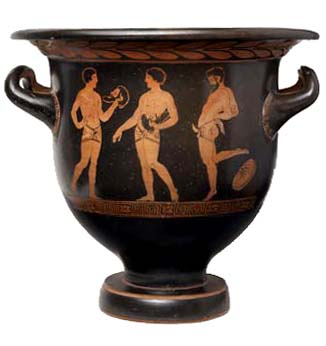
The senior curator at the Nicholson, Michael Turner, has pointed out that although it seems to depict three warriors in a state of sexual arousal, two of whom are holding the heads of vanquished foes, it actually shows three actors preparing for the performance of a play. The phalluses are part of the costumes worn in a performance dedicated to Dionysus, the God of exstasis, a term describing a state of heightened or altered experience and from which we derive the word 'ecstasy'. The theatre, drinking wine, having sex were the sorts of activities that took one out of oneself. Since the pot was also a funerary urn, maybe the deceased just wanted to be reminded of the things they enjoyed when they were alive.
It is complex piece; amusing, sophisticated and beautifully crafted. It is also deeply traditional, in that it was made in accordance with an established practice which dictated materials, technique, form and content. Like many ancient pots, it is an example of work that exemplifies the very best of tradition, without apparently stepping outside the conventions of the time.
Some of these traditions have lived on, with the Chinese pottery of the Sung and T'ang dynasties inspiring many contemporary practitioners. An obvious example is Gwyn Hanssen Pigott, who, in her 2005 retrospective exhibition mounted by the National Gallery of Victoria, displayed examples of her work alongside ceramics from the Kent collection.
Hanssen Pigott's early career was built on the belief that these Chinese ceramics represented a high point in human achievement. This was a philosophy shared by Leach and also by her first teacher, Ivan McMeekin, who developed a love of ceramics during time he spent living in China in the 1940s and subsequently when he was living and working in England, most notably with Michael Cardew, in the 1950s.
As McMeekin's first apprentice, Hanssen Pigott would inherit that belief, and it is therefore entirely fitting that she should be able display her ceramics near the works that have inspired her for much of her life.
Hanssen Pigott has gone one step further than this, by actually making arrangements of ceramics housed in the collection at the Freer Gallery of Oriental Art at the Smithsonian Institute in Washington.
These seven arrangements: 'Still Life with Pickle Jar', 'Garden', 'Remembrance', 'Blue Parade', 'Trail with Pale Bowls', 'Float' and 'Studio', obviously reference the type of groupings she makes with her own ceramics, for which she has become quite famous.
Of course, Hanssen Pigott isn't the first artist to rearrange museum collections in order to make some kind of point. There is a long history of this kind of activity in the contemporary arts. For example, the English artist and film-maker Peter Greenaway has worked with several important European collections, as in his 1991 installation The Physical Self which utilised the collection of the Boymans-van Beuningen Museum in Rotterdam. In 1998 this same museum had hosted the Swiss exhibition designer Harald Szeemann's A-Historical Arrangements, where one could, for example, find a piece by Joseph Beuys juxtaposed with a Degas bronze and some contemporary office furniture.
In the early nineties the American artist Fred Wilson staged a highly influential exhibition titled Mining the Museum which examined the history of race relations by re-arranging the collection of the Maryland Historical Society in Baltimore. I heard Wilson talk about his project at a lecture he gave at the University of Melbourne in the mid-nineties, where he spoke about bringing his background as an artist of both African American and American Indian descent to bear on the conventions of museum display.
By the deceptively simple device of placing objects together which were normally displayed in entirely different contexts — for example, one of the arrangements featured a cabinet containing ornate silver jugs and goblets, perhaps originally owned by a wealthy slave-owning family, amongst which some iron manacles had been placed — he made startling new connections in a collection which had hitherto been given over to a more familiar mode of display.
What projects like this have in common is a desire to construct a new and unexpected narrative out of the vocabulary of objects that inhabit the museum. Sometimes this story has a very real political or social point to make, as in Wilson's project, at other times the connections drawn may be more abstract or poetic, or even trivial — simply window dressing on a grand scale.
The writer Lisa Corrin, who had made a detailed study of Wilson's projects, describes museum-critical art as being a genre so familiar in the contemporary arts that it possibly deserves it own 'ism', as in 'museum-ism'. Others have pointed out that the seemingly arbitrary re-arrangement of museum collections may simply be an egotistical display, an easy way for an artist or curator to inscribe themselves onto the fabric of the collection.
In the case of Gwyn Hanssen Pigott's interventions - and here I'm quoting from a Smithsonian press release - she 'ignore[s] place and date and focuses wholly on colour, form, pattern and relationship, [demonstrating] a curiously sympathetic approach to the taste of Charles Lang Freer who acquired most of the selected objects a century earlier.'
This begs the question as to how one could fail to be sympathetic to Freer's aesthetic judgement in a project such as this, which, after all, involved making tasteful arrangements of objects Freer had collected, then displaying them in a museum that bears his name. Certainly, Hanssen Pigott may have aired certain objects from within the holdings that hadn't seen the light of day for some time, although you surely don't need the services of an artist to accomplish this task — that's what curators are for. For all their beauty, elegance and gilt edged provenance, these works demonstrate the complicated relationship between object and image, appropriation and creation, inherent is museum-reliant projects such as these.
There is an apposite quote which the artist and writer Brian O'Doherty, who is also known as Patrick Ireland, places at the beginning of his article The Gallery as Gesture, where he quotes Goethe, stating: 'The value of an idea is proved by its power to organise the subject matter.'
Whether working with objects she has made herself or manipulating existing collections, Hanssen Pigott has almost single-handedly created a genre of work, which is often - although I think erroneously - given the title of still life. Her work represents one of the few real innovations in Australian ceramics over the past few decades, and it's certainly the only one I can think of that has had an international impact. The down side is that it also demonstrates the way an innovation can, within a very short space of time, become a cliché, which brings us back, in a somewhat circuitous fashion, to the concept of old and new.
This is because what Hanssen Pigott made new in the 1980s has now become a familiar device, so much so that I suspect many viewers no longer stop to consider either what impact her work has had on contemporary practice, or indeed what antecedents there may be to her groupings of objects.
For example, Roy Ananada, writing in the journal Craft South about the work of the glass artist, Wendy Fairclough, states that Fairclough's inspiration is drawn from the traditions of still life. He goes on to note that images of the painter Giorgio Morandi adorn Faircloughs' studio walls, and yet nowhere in his essay is there any mention of Hanssen Pigott. I've heard of historical amnesia before, but this is the critical equivalent of short term memory loss. Fairclough's arranges many of her installations in a different way to Hanssen Pigott, for example tilting and balancing objects and placing them in a precarious relationship to their support, and therefore I don't mean to suggest that Fairclough's work is the same as Hanssen Pigott's. Nonetheless, when one writes about the work of a crafts-based practitioner who arranges objects in a manner suggestive of a still life and adorns their studio with posters of Morandi, I think it fair enough that Hanssen Pigott at least get a passing mention.
In 1998 when I exhibited a work titled Object Lesson in the Adelaide Festival of Arts exhibition Offline,curated by Kevin Murray, the catalogue image described the work as being ceramics, whereas I actually had exhibited a photographic transparency on a light-box. My sly critique of the fad for object-arranging had back-fired. The language of advertising, given voice through the elegant photography of Earl Carter in a piece originally commissioned by Belle magazine for a feature article I shared with Hanssen Pigott, Prue Venables and Shiga Shigeo, proved to be so pervasive that it merged seamlessly with the objects. One began to lose any sense of where the objects ended and the image began.
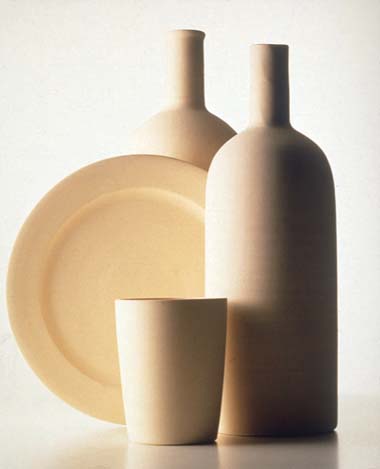
It is this hegemony of the image, of objects arranged and depicted, that has led to many of the developments we now see in contemporary ceramics. The distancing of the viewer, whether it be in a photograph or in the gallery, lends a certain fine art respectability to things which otherwise might find themselves sitting in the kitchen cupboard.
This can be seen in the absolutely extraordinary attention that is given to the photographing of work, and even perhaps why the term photographing has been replaced by 'documenting', a catchall phrase which extends to the mandatory appearance of an essay about the work, these things being as important as clay or glaze, sometimes more.
It is here that we see one way the old is made new in contemporary ceramics; not by striving for a new form, in a continuance of the modernist project with all its restless creative drives, nor by embracing tradition, a word which is now often used rather pejoratively. It is in the way that real, solid objects are now quite easily confused with the shadows they cast. Sometimes it's like they're on TV.
If not simply seen in terms of old and the new, innovation is often posited as a dialogue between the staid and the cutting edge, or even the dull and the groovy.
In 1968 the Director the National Gallery of Victoria, Patrick McCaughey, writing about an exhibition of proto-funk ceramics by Bill Gregory at the Pinacotheca gallery in Melbourne, observed that:
'[Gregory's ceramics are] splendidly hideous and marvellously useless, taking the Mickey out of arts and crafts pottery '
In his review of the same exhibition, the philosopher and art historian Donald Brooks wrote that:
'There are few spectator sports more agreeable than watching someone stride up to a holy cow and kick it in the slats so hard that the sawdust dribbles out. Studio pottery is just such a sacred animal, and Bill Gregory is the man with the deft boot his pots are absolutely useless as refreshing as drought-breaking rain after an aeon of cider jugs with bucolic bodies like boiled oatmeal and orchid jars in a sensitive toffee temmoku.'
In the late 1950s Brooks had rented the flat above Hans Coper at the Digswell Arts Trust in Hertforshire. He knew Coper well, even on occasion helping him out in his studio, and he was well-placed to observe the interplay between those English studio potters who more or less followed Leach's approach and the modernist tendencies exemplified by Coper, Lucie Rie and others.
One of the few things I have gleaned from Brooks' recondite and complex arguments is that art, to be art, must constantly be new, which may, or may not, be the same thing as saying art has to be innovative. By his reckoning, a great deal of what passes for art, and this includes much contemporary art and doubtless all contemporary ceramics, is not art at all, but something else entirely. Brooks' ends his 1985 essay for Craft Australia, titled '(Real) art is not craft', by writing that ' we do not need a full or definitive answer if our objective is only to distinguish between art and craft. For that limited purpose the criterion is clear. Craft is a product of action: art is not.'
For those of you wanting a quick answer to the art/craft debate, I thought I'd just throw that in to the mix.
Brooks leaves the question of what quality then distinguishes art un-answered, but I suspect he thinks it has more to do with thought than action, with the mind rather than the hand.
There is, however, another aspect to this equation, one that has less to do with grand theories of art and is simply based in fashion. In 1968, when Brooks was writing his review, Gregory's ceramics were thought of as being groovy, irreverent and funky, poking fun at convention and the status quo — they were, to use the parlance of the day, 'with-it'. Kicking holy cows was all the rage and there were precious few constraints on where one could sink the slipper.
That same year, 1968, Margaret Dodds returned to Australia from studying with Robert Arneson at the Davis campus of the University of California. She was one of the esteemed early group at the TB9 studios who, if not actually being around for the birth of Funk, at least got to hold the baby. In 1968 she found herself back in Adelaide living in a suburb called (predictably enough) Holden Hill, where she added a potent, West Coast authenticity to the development of funk ceramics in Australia.
Dodds' ceramics were definitely groovy, in a kind of slack, off-hand, hard to pin down way that exemplified the early incarnation of funk, a style which was so different to the brittle and somewhat precious work which characterised the latter phases of the movement known as Skangaroovian funk.
Of course, in the beginning funk was not at all to the liking of the establishment. They had just got used to large heroic abstractions, first in painting and sculpture and then in clay, so the arrival of these strange, parodic objects was quite unsettling, like coming home and finding a garden gnome pissing on the leg of your dining table.
The 1966 November/December issue of Craft Horizons had a special supplement which contained reviews of three exhibitions of contemporary ceramics: the 24th Ceramic National at the Everson Museum of Art, Abstract Expressionist Ceramics at the University of California in Irvine and the exhibition Ceramics from Davis, held at the Museum West Gallery in San Francisco, which showcased works by Arneson and seven of his students; Gilhooly, Kaltenback, Shaw, VandenBerge, Unterseher, Walburg and the young Australian Helen Dodd, as Margaret Dodds was known then.
In his review of the Davis show, Joseph Pugliese noted that the catalogue essay stated that 'Arneson is placed alongside Peter Voulkos as one of the artist/teachers bringing pottery back to the power it's achieved during its long history as the most durable art form, and the most fragile. 'Pugliese counters with the observation that, and I quote' this is an unfortunate introduction to the exhibition, because these two guys are interested in art, not pottery.'
Margaret Dodds told me that Arneson was annoyed with Pugliese's review, and doctored a copy of Craft Horizons so that when the magazine was opened at the appropriate page a funny noise was heard.
It's not a bad review by any means, but it also doesn't lie down like a puppy and ask for its tummy to be tickled. He isn't that flattering about Dodd's work, writing that her cars are ' fun to look at, but should be bigger, or smaller, or something', a criticism which I think is pretty lame. After all, you can't just say '..or something' — that's just not trying hard enough, and secondly I think Dodds made her cars just the right size, because they were kind of like toys and I think that's where they gained a feminine and also feminist quality, talking about boys and motherhood and all sorts of other oblique references, without being bombastic and keeping a sense of play about them. In an interesting aside, Dodds told me that her father worked for a time as a car salesman with the Adelaide firm of Wakefield Motors, so it seems that cars were woven into her personal history from an early time.
The really interesting thing about the review is that in 1966 Pugliese is already writing that Funk work is a bit dated. He ends by stating that
' one can reflect upon the overall sweetness, even coyness, of most of the exhibit. These young artists are too eager to ride the high-style wave. Only ten years ago a ceramics exhibition on the West Coast would have been characterized by powerful, aggressive, masculine pieces. This seems to have given way to a decorative effeminacy, which at its best only titillates. Maybe the revolution in ceramics is over and we don't even know it.'
Regarding Pugliese's comments, it's always wise to try to get some idea of where the critic is coming from, rather than taking the criticism at face value. In this case, the short bio in Craft Horizons stated that 'Pugliese is a potter, currently specializing in ceramic shoes (see Craft Horizons, September/October 1965) from 1957 to 1964 he was associated with the University of California, Berkley, where he taught the history of ceramic art.'
Ceramic shoes? Sounds funk to me, as funk as the shoes the artist Alex Danko made while he was a student at the South Australian School of Art in the late 1960s, during which time he had contact with Margaret Dodds. So, referring to the appropriate issue of Craft Horizons, one finds an image of a Pugliese ceramic shoe, in the company of an Arneson sculpture, a jar by Michael Frimkess and a Ron Nagle cup. By the way, Pugliese's shoe was almost two feet long (!), which I guess puts his remarks about Dodds' cars being the wrong size in some sort of context. Keep in mind that we are having a serious discussion here about a man that makes big ceramic shoes criticising the work of a woman who makes little ceramic cars.
This Premier Pottery vase in the shape of a shoe, made in Adelaide towards the end of the 1800s, represents very different social values to those embedded in funk. It spoke of comfort and the ability to purchase and enjoy an item which was not entirely functional — and to this extent the values are arguably the same — but it most certainly would not have stood for lefty-politics, feminism, social activism, anti-war sentiments and an interest in mind altering drugs. The Premier Pottery shoe was a deeply middle-class object, or maybe these days one would say aspirational.
It would not have been bought by those on the top rungs of a settler society; those ceramics would have been made in porcelain and imported from England. However, this shoe was one step up (!) from purchasing purely necessary items like this Twernack jar, also made in Adelaide about 1877. We now see a pot such as this in an entirely different light, more as an object of nostalgia, an attitude even held, I would hazard a guess, by many contemporary potters. Whether that same attitude would extend to a similarly functional, working- class object like a sixteenth century Tamba-ware jar is predicated not so much on the intrinsic aesthetic value of the item, but rather of the history of the impact of Japanese ceramics on Western potters.
Early Australian pots, like this salt-glazed demi-john made in 1870 by Hindmarsh Pottery, were only crafted to the extent that function dictated. They had a job to do and they did it, proletarian to a fault. As such, they represent the kind of pot that is most marginalised within contemporary ceramic practice, yet they hold within them the possibility of real transgression, of resistance, far away from the spectacle of the contemporary arts. What I'm referring to is tradition.
The interesting thing about tradition is that it hardly ever gets a mention in the official discourse of the arts. Just as I trawled through the mission-statements of arts organizations to be confronted with the word innovation at every turn, I found a complete absence of the word tradition. It didn't appear once. Why is this?
Maybe everyone assumes that tradition is just out there, like the air, and it doesn't need to be mentioned. Maybe there is an assumption that all artists and craftspeople will be thoroughly trained in and informed about their tradition, their craft, before they go forth and innovate. Maybe the concept of tradition is seen as a bit old-fashioned and embarrassing and if no one talks about it will all just go away.
The problem with tradition, at least in Australian ceramics, is not that it's holding us back, but rather that we don't engage with it enough. For a start, the vast majority of the first generation of post-war studio potters completely overlooked the vernacular tradition of Australian folk pottery, moving straight to an Anglo Oriental model based on what I would counter was a mis-reading of Leach. As long ago as the early sixties the Australian potter Ivan Englund, in an article titled 'Does Tradition Matter', wrote that:
'In Australia the lack of a pottery tradition is recognised and some potters wonder if their task is made more difficult because of this. Pottery making was not one of the tasks attempted by the early settlers nor did the native aborigines make pots. And in the intervening 175 years no lasting efforts were made, and our pottery needs were provided for by imports from England '
This simply isn't true. In the early 1980's I spent several years working in a traditional family owned pottery, Bennett's Magill Pottery in Adelaide, that had for five generations and well over a hundred years been making the same sort of functional wares that they make today, and there were dozens of such potteries scattered all around the country.
What Ivan Englund was actually saying was that the Australian ceramic tradition simply didn't accord with the dominant theoretical discourse of the time, which was based on Leach's writings. Put simply, there was something about this kind of pottery that didn't seem to fit with ideas of how the studio ceramic project could be progressed, and so it was simply ignored.
From this distance, it's hard to imagine how such a beautiful tradition of folk pottery could be overlooked, but the reason is simple. It wasn't seen as being innovative, and it wasn't fashionable.
The most valuable lessons that these ceramics can offer is that they rather reverse the current trend of the hierarchy of values we now consider normal in the creative process, where meaning is privileged (and don't we see this again and again in teaching situations) whereas these objects are first and foremost about function. Their form follows their function, and the meaning is something that is variously constructed by the social conditions of the time. The odd thing is that this doesn't make them any less interesting objects than the most deliberately meaning-laden contemporary ceramics.
I'll end by discussing a couple of projects I've been involved in, and considering what this work might mean in this discussion about innovation.
In the mid-nineties I met up with the Melbourne-based ceramic artist Steven Goldate when we were both at the Victorian College of the Arts, in the days when the VCA had a ceramics course.
We started to play around with a primitive computer modelling program Steven had downloaded as freeware off the web. It was called Lathe, and that's what it did, performing a very basic lathing and wire-framing task.
Rather than just continue to feed in random lines for the program to lathe, we decided to look around for some information (data) that had a certain logical, and poetic, consistency when applied to this program. There were obvious connections to cartography, with grids and maps and globes. In one of those fortuitous co-incidences, someone had pointed me towards the Mitchell Library in Sydney, and had told me to look at the floor in the lobby which bears the image of the Tasman Map.
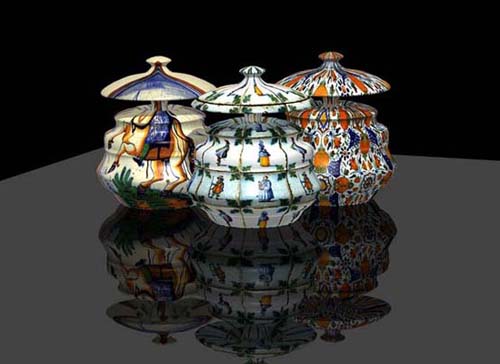
Steven and I started doing a lot of research into the Tasman Map, and the history and indeed the meaning of cartography, both in its techniques and in what maps mean for those that do the mapping, and indeed for those that are mapped.
We took data from the Tasman map and fed it into this little program, and made our first Tasman images. Steven then bought a better program and a bigger computer — one with a whole eight megabytes of RAM — and we continued to make slightly more elaborate images. At a certain point Merran Gates, then at the Canberra School of Art, heard about the work and invited us to participate in an exhibition she was curating for the Asialink centre at the University of Melbourne, called Patterning: Layers of Meaning in Contemporary Art.
Work from the Tasman project was included in several more touring shows, it was shown in the major gallery at RMIT Storey Hall, and as a fitting end to the project the final Tasman work was bought by the Art Gallery and Museum of Tasmania through the Plimsoll bequest. All in all this project lasted about ten years, it developed quite a corpus of information and artefacts, including a research document outlining all the historical and technical publication relevant to our research.
While Steven and I slowly became aware that this project was pretty unique, the vast bulk of the information we were working with was technical or historical in nature, so in a way the Tasman images, or virtual ceramics as Steven likes to call them, were simply a result of the data we were working with. I'm not sure if I'd describe this process as one of form follows function, but I think that part of the delight I had in this work was that it wasn't at all like the stereotypical art-making process where one stares at the canvas or the clay, striving to make an individual and meaningful mark. In a way it was much more like making a functional object, except in this case when the function, that of explicating data, was removed, you were just left with the images. I also think this was key to a successful collaboration, in that if we had had to make joint aesthetic decisions based on personal taste the project would have come unstuck very quickly. Working in this manner, there was a kind of distancing between our own egos and what we made, and again I think there are parallels here in the making of functional ceramics.
For those who are interested, there is a link to a virtual gallery and essays associated with the Tasman project online at www.damonmoon.com.
For the last seven or so years, my work has mainly concentrated on a deep engagement with the traditions of Anglo-Oriental ceramics, both in an academic sense and in the pots I have been making. Some might see this type of work as being quite different to the Tasman project, or indeed a number of other projects or groupings of work with which I've been involved, either as a maker or curator or writer/researcher. I actually don't see it this way, in that this current work is information-rich and thoroughly grounded in research. Looking at the impact of Leach on the development of Australian studio-pottery for my doctoral research made me want to make these kind of pots - it was just another way of knowing.
I guess I've pushed the work pretty far in terms of the techniques of making, for example using traditional Japanese-style hand-wheels to form the ware and gathering raw materials for the clays and glazes. I've found it interesting to see that when one works in this way, you end up with results that look like old Chinese or Japanese pots, simply because that's what the techniques, the data you input, leaves you with.
So another similarity to the Tasman work is in the sense of distance between myself and the work. What there isn't is a signature style, because I have a horror of being known as the person who makes bottles or beakers or bowls in this or that shape with the nice little line around them, or that sit in groups, or that are ironic and look like Toby Mugs or something.
If I can have any personal claim to innovation — a term which I think is pretty meaningless — it's primarily to be found in the way I work, rather than in what I make. And, all in all, I still think it would be preferable if this word was done away with. I'd far prefer to see terms like quality, intelligence, humanity and even beauty, over innovation.
Damon Moon
Willunga 2009
The above quotes were all sourced from the official websites of the named arts organizations in late 2008 and early 2009.
- Lisa Corrin Mining the Museum: An Installation by Fred Wilson The New Press, New York 1994
- Frans Boenders quoted by Debora J. Meijers 'The Museum and the A-Historical Exhibition' Thinking about Exhibitions edited by Rosa Greenberg, Bruce W. Ferguson and Sandy Nairne, Routledge 1996
- www.asia.si.edu/press/prParades.htm accessed June 2009
- Goethe quoted by Brian O'Doherty 'The Gallery as Gesture' Thinking about Exhibitions ibid
- Roy Ananda 'Wendy Fairclough' Bulletin issue 4 June-July 2008 published by CraftSouth
- see feature article 'Neutral Ground' Belle: Design and Decoration No. 113 February-March 1996 Australian Consolidated Press Homemaker magazines
- Patrick McCaughey quoted in Judith Thompson, Skangaroovian Funk Art Gallery of South Australia 1986
- ibid
- Donald Brooks '(Real) art is not craft' originally published in Craft Australia # 1, p. 108 — 109.
- Joseph Pugliese 'Ceramics from Davis' Craft Horizons Vol. XXVI November/December 1966
- ibid
- ibid
- ibid
- Ivan Englund 'Does Tradition Matter' Pottery in Australia Vol. 2 No. 2 October 1963
